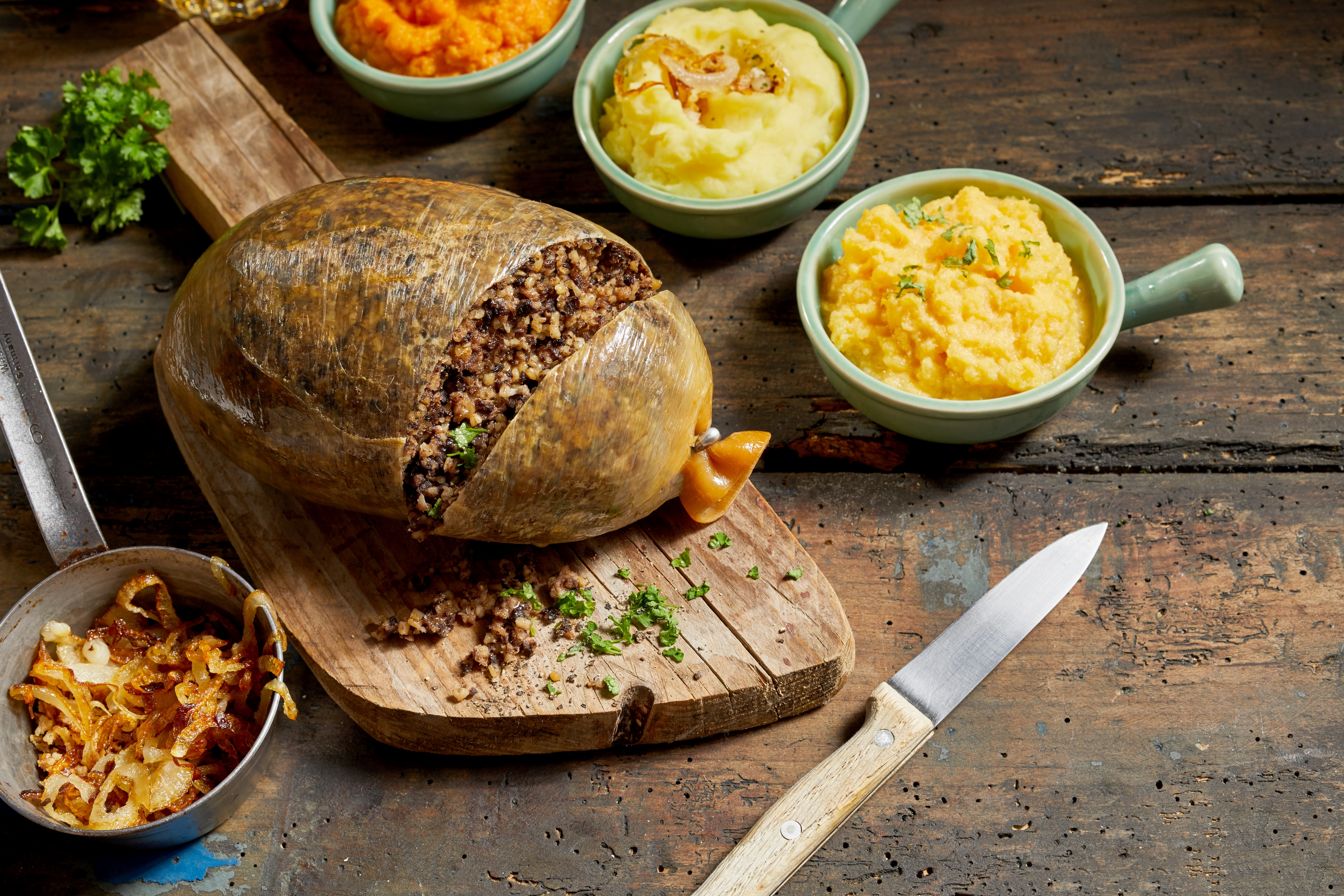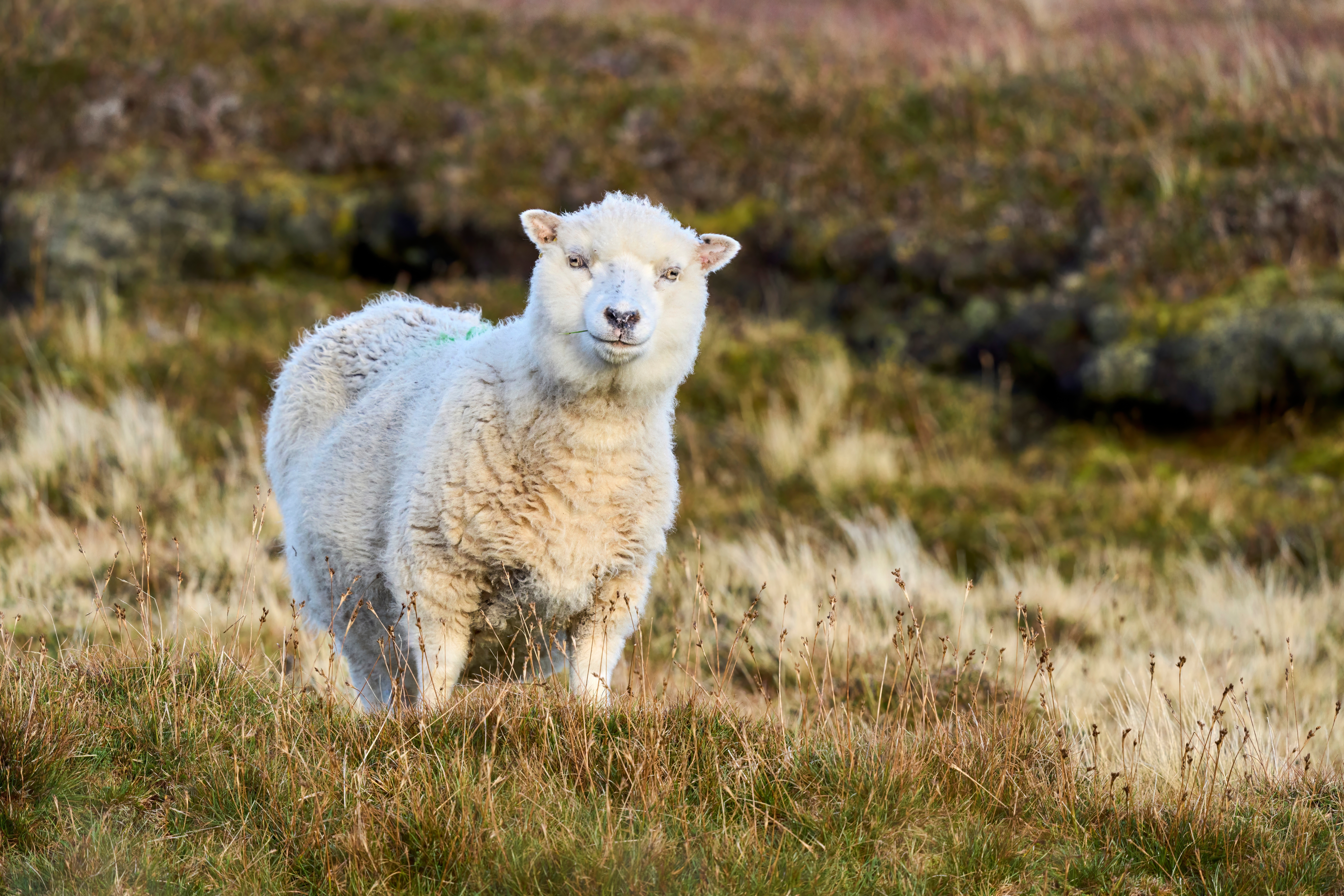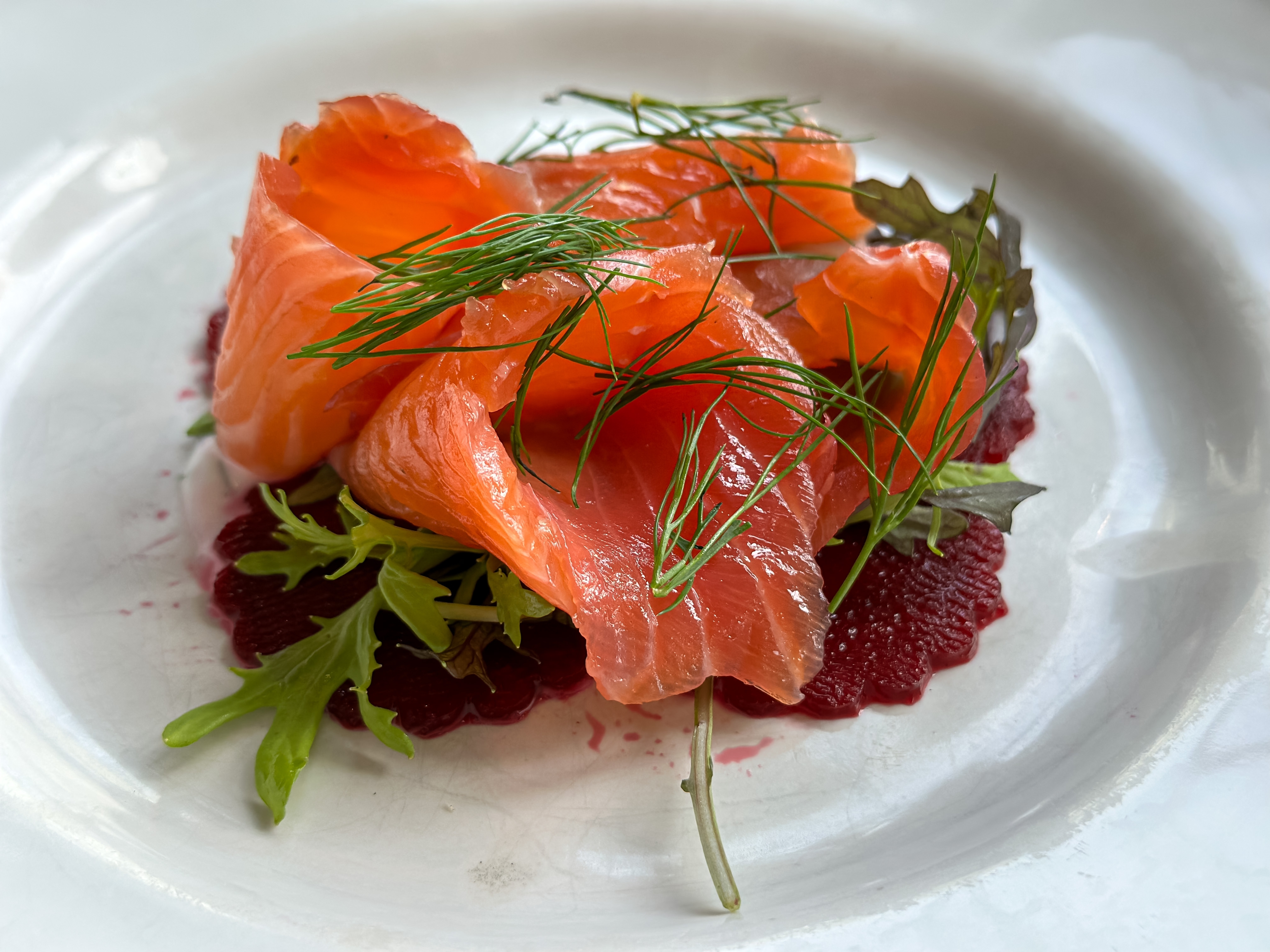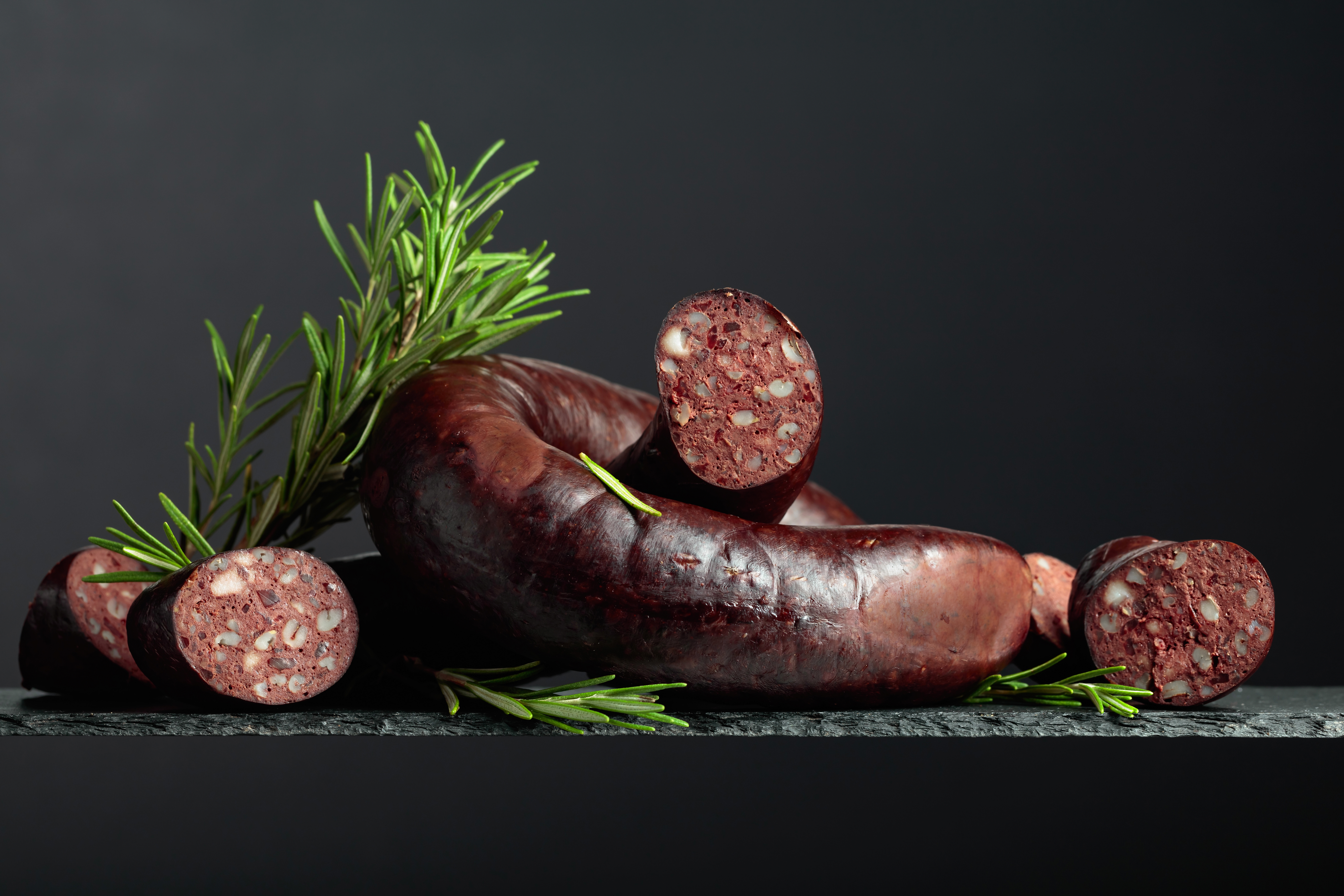Free digital copy
Get Speciality Food magazine delivered to your inbox FREE
Get your free copy
January is a time of change. To sweep out the (figurative) cobwebs, reflect on what has and hasn’t worked the year before, and to usher in ‘newness’. It’s a particularly good time to introduce products – the aim being to entice loyal and new shoppers through the doors in what is a traditionally tough time in retail and hospitality.
And with the messaging around supporting the circular economy growing at a pace, as farmers and producers hammer home the headlines (that fantastic food and drink can be found all over the British Isles), retailers might want to think more carefully about exploring what’s, sometimes literally, on their doorstep as they make their buying decisions in 2024.
Producers, trade bodies and organisations in Scotland, say the country is one of the most untapped resources for fine food retailers.
Scotland’s food and drink economy is growing
Scotland’s rich natural larder, steeped in history and culture, has paved the way for an increasingly entrepreneurial food and drink industry, with brands that have built a reputation for quality and traceability across the world, says Amanda Brown, programme director at Scotland Food & Drink.
The red meat sector, particularly, is fundamental to the Scottish economy, worth an annual estimated £2.8bn (up over 16% since 2016), she reveals, citing data from Quality Meat Scotland.
“Over the last 10 years exports have more than doubled,” Amanda says, adding that in 2022, these exports were valued at more than £8bn, factoring a diverse portfolio of products including not only beef and lamb, but seafood, honey and confectionery. Closer to home, the ‘local’ message is strong too. “Scottish provenance has become prevalent across all categories as shoppers care more about where their food comes from than they have ever before.” Around 60% of Scottish consumers say they are willing to pay more for food labelled ‘from Scotland’, and there has been a 40% increase in sales of Scottish brands in the UK during the last decade.
A new strategy from Scotland Food & Drink, ‘Sustaining Scotland. Supplying the World’ launched in 2023, building foundations for innovation, and driving demand for growth in the country.
“Innovation is really important to our sector and helps businesses develop new products and ultimately create new market opportunities,” says Amanda, who believes investing in technology, automaton and data will move Scotland forward leaps and bounds in the next few years. “Scotland has a diverse business community with world-leading academics and technology companies based here creating more possibilities for collaboration, and great opportunities for growth and profitability.”
“It’s been a real pleasure to see how attitudes to the Scottish food landscape have evolved and developed,” says Jane Saba of The Scottish Deli. “I think what we are seeing is a recognition of the wonderful and varied offering here. This has been mirrored by the growth of a strong food and drink sector, with talented growers and producers who are keen to share their skills and passion with locals and visitors alike.”
Jane says she is seeing more makers taking traditional, much-loved favourite products and giving them a modern twist, while others develop new products using local ingredients.
“Some key elements in this mix include the continuing growth of the farm food sector, where farmers have diversified into producing speciality food and drink products from farm to fork, or farm to bottle,” Jane continues. “Another important factor has been the role that women have played in driving change across the sector, and in setting up successful speciality food and drink businesses.”
Why should we be celebrating Scottish produce?
Jane says “the sheer variety and quality of fantastic food and drink products available from Scottish producers, and wholesalers, is cause for celebration”.
Chef Wendy Barrie, who champions Scottish produce via The Scottish Food Guide, and through cookery demonstrations and food education, agrees. “There are a lot of treasures in Scotland, but people don’t realise they exist!”
There is much more to the country than whisky and haggis, she says, pointing to native meat as an untapped jewel of Scotland. “We don’t have vast fields. A lot of our land is pasture-based and not necessarily suited to intensive agriculture, and so grazers are something that we are famous for.
“In Scotland we have five heritage breeds of sheep and cow, and almost all of them are on some watchlist or other.” They may not always seem value for money, as the animals are smaller, “but they are packed with flavour. And, of course, the whole ‘eat less meat but eat better quality’ ethos fits Scotland like a glove. We are very powerful on premium products, and that’s possibly undervalued. Our heritage breeds are supreme quality, eating off the land with no other input.”
Wendy says Scottish berries are second-to-none when in season, and she considers producer Andrew Skea of Potato House one of the best potato growers in the whole of the UK, if not Europe. “He’s the go-to for blight-free, beautiful heritage potatoes. He’s got dozens of varieties and either sells them as ‘ware’ potatoes for the table, or seed. He was guillotined in Brexit because, although he is famous across the Benelux and through Germany up into Sweden, almost overnight he wasn’t allowed to sell there anymore. I want more people to support Andrew, because what he does is so dedicated.”

Supporting the industry
“Supporting the Scottish food industry is crucial for economic growth, sustaining rural and cultural heritage, and ensuring the sustainability of agricultural practices, as well as boosting wildlife, says Brynn Wade of The Farmer’s Son, which makes high quality black and white pudding and haggis.
“The quality, range and variety is second-to-none,” says Jane of Scottish fare. “Combined with competitive pricing, well-designed packaging, and the strength of Scotland as a respected and trusted brand, it’s not surprising that Scottish products sell well.
“For us, the key reasons to source and stock Scottish ingredients and products come down to a range of factors.” These, she says, include a focus on sustainability, finding cost-effective ways to source seasonal, fresh ingredients while keeping supply chains short, and supporting local growers and makers. “For retailers in the rest of the UK, sourcing a wider range of food and drink from Scotland, and not just the usual suspects, seems like a wise choice in ticking these boxes. There may be some great products such as Scottish vodka, and rum, and Scottish cheeses which fall into this bracket.”
“Many of our products are targeting premium categories and markets, and offer a choice of product that complements the local offering,” adds Amanda.
“Past periods of inflation have shown food and drink that is valued by consumers will see same or higher levels of consumption. With shoppers’ budgets constrained, there is an incentive to trade up or maintain spend, and so now is an important time for GB and international buyers to consider Scottish product categories.”
One of the main barriers producers face, apart from the distance from target retailers in the South, is hammering home their authenticity, says Wendy, which is why it pays dividends to speak with a respected wholesaler, or to go direct to the makers yourself. “There’s a kind of food tourism band waggon. Some products aren’t as artisanal as they make out, and I get very annoyed when customers are hoodwinked.” When something becomes popular, it is almost instantly marketable, Wendy explains. “I saw on social media somebody doing a presentation talking about menus and saying if they said they were using Scottish beef they could put the price up! I’m wanting to see, as should retailers, what breed it is, which farm it’s from, and how long it was hung for.”

An edible landscape to be proud of
For Wendy, Shetland lamb is something Scotland needs to be shouting about from the rooftops. “The native Shetland lamb is just amazing,” she says. “The flavour that comes through from their diet of eating from the land is incomparable. I recently came home from a cooking demonstration there. I keep a fridge in the car when I’m travelling, so I brought home all the bones and dripping and made potato and onion soup. The flavour with just those few simple ingredients was mind-blowing.”
It’s important, she adds, to be able to differentiate between types of lamb. Some products labelled as Shetland lamb are sheep that have been raised on the land there, “but it’s the native Shetland sheep breed that is the very best”.
Proper Scottish black pudding is another product to be proud of. “There are two or three butchers in the whole of Scotland who make it with fresh blood, and you really can taste the difference,” so do your homework, she suggests.
Wendy also implores buyers to delve further into the Scottish drinks industry, outside of whisky and gin, saying there are some real gems to be found. “On Orkney and in Perthshire are two companies who do gorgeous fruit wines all with either foraged or donated fruit. They are fantastic,” she says.
“Orkney Wine Company forage what they can gather in season. It’s really Nordic, high north flavours. The Cask Elderberry Borealis is a Port-style that’s lovely and smooth. It’s a goodie.”
Jane scarcely knows where to begin when talking about the magic of Scottish produce, saying the most iconic, of course, are black pudding, shortbread, haggis, smoked salmon and whisky – all of which her deli stocks.
Trotter’s Independent Condiments are worth looking out for, Jane says, “particularly their wonderful Mostarda chutney. Try it paired with some Great Glen Charcuterie venison salami.”
On the drinks side, “we are big fans of Scottish gin, and amongst our favourites are Persie gin, with its range of flavour profiles, and The Gael - blending traditional botanicals with a hint of Scottish heather.
“Isle of Harris Gin continues to sell well. Their newly launched dram, The Hearach, Isle of Harris Single Malt Scotch Whisky, promises to meet with similar success. And Summerhouse Drinks supply real lemonades and craft sodas, made using all-natural ingredients on the family-run farm in the beautiful North East of Scotland.
“Who does not love a good old boiled sweetie? Crieff-based Gordon & Durward offer all our favourites including Soor Plooms and Edinburgh Rock.”
Jane has some little-known gems from Scotland she loves too. The Scottish Deli, she says, sells “sack loads” of coffee from Glen Lyon Coffee Roasters. “These speciality coffee roasters are B Corp certified, and their commitment to ethical sourcing and sustainability is important to us.”
She loves working with Stewart Tower Dairy for ice cream, Kenmore Bakery for its shortbread, Palmerston’s for jam and preserves, Breadalbane Bakery for artisan bread, and The Homemade Tablet Company for “Bev’s famous tablet, including traditional and vegan options”.
Amanda says anyone looking to expand their drinks range in 2024 should naturally look to Scotland first. “Scotland has built one of the most successful alcohol exports in the world in our whisky industry, with iconic global brands as well as newer distilleries now making their mark across spirit categories including whisky, gin, vodka and rum.” The country’s breweries, she says, “continue to collaborate and innovate” too, “delivering new products to maximise on the industry in craft beer, including the low and no markets.”
Additionally, the ‘premium basket’ according to Amanda, continues to grow in the shortbread/biscuit, bakery, cheese and condiment markets, which are ‘the ones to watch’ for new product launches and exciting offerings into the new year.

Choosing Scottish seafood
Wendy says she is concerned about the dwindling wild salmon stocks in her home country, and urges buyers and retailers to seek out MSC labelled, more ethical options. She also believes we need to think of Scotland’s seafood offering outside of smoked salmon, as there is much more to shout about. “I don’t think, especially, we make enough of the lochs and freshwater fish. The trout here is excellent. Or I would be going for a smokie, or a wonderful cold-smoked Finnan haddie. In Fife we have fantastic fresh mackerel and a lot of shellfish is landed here.
“Another big industry is Shetland for mussels. They are a super thing to farm because they use the fast-flowing water – you don’t need to feed a mussel. And they are very nutritious. They’re one of those things we could eat far more of without damaging the planet.”
More than 65 types of fish and shellfish are caught or farmed in Scottish waters, says Donna Fordyce, CEO of Seafood Scotland. “We’ve heard firsthand from many top-tier chefs throughout the UK that our cold, clear waters play a significant role in this – the low temperatures also contribute to a fresher, more delicate flavour.” This is why, she says, restaurants across Britain revere Scottish seafood and, equally, why there’s such hot demand in overseas markets.
From an environmental perspective, Donna continues, “We have the most robust fishery management plans in the UK, heavily regulated to ensure the marine environment is maintained for the future – and rightly so. Scottish farmers care deeply about conservation. Many fish are caught by family-owned boats using traditional low-impact methods. Their shared objective is to ensure sustainable stocks for future generations.”
Seafood expert, fishmonger, and food writer Mike Warner, says the industry in Scotland is split into three parts. The Northern Palagic fisheries tend to focus on mackerel, herring and blue whiting, landing huge catches that largely end up on tables in Scandinavia or Russia because “we don’t have the culture of eating those kinds of fish here.” Then there are the white fish trawlers, predominantly based around Peterhead. “It’s the biggest white fish landing port in Europe.” Catches include cod, haddock, hake and coley. Again, lots of this is exported, though some finds it way into the UK food chain, says Mike.
“Then you’ve got the shellfish. Lobster. Crab. And probably the biggest langoustines. They go to make scampi and do get exported as well – around 70 to 80%. That’s what we should be focussing on using more here – langoustines from Scotland. They are a beautiful, homegrown alternative to imported king prawns.”
Some of the very best seafood can be sourced from the fishing communities out in the Western isles, again, most of it exported, which Mike says is quite tragic. “The bulk of UK landings come from Oban, Peterhead and Scrabster, but there’s a huge industry geared to export.”
The leading barrier to keeping Scottish seafood in the British market is that more value can be achieved through export. “That’s why the industry has flourished over the last 20 to 30 years. Another, is that while a lot of white fish goes into fish and chip shops – there are about 10,000 to 12,000 of them in the UK – the vast majority will use imported fish. Of course, our fisheries in Scotland aren’t geared up to do that. In Norway they do an amazing job with this process, and marketing cod and haddock back to the UK. They take that product, gut it, fillet it, portion it, blast freeze it at sea, pack it, and it will come into Grimsey and get distributed. It’s a really, really good product for fish and chip shops.” Mike says while admitting it does seem senseless that we are exporting our best fish, and importing from elsewhere, but the price point is a huge factor.
Something else that inhibits sales of prime Scottish seafood in the UK is that we don’t have a large culture of eating fish in our homes here. And when we do, British consumers are used to buying lesser quality products from a supermarket, at a lower cost – a habit that’s hard to break. Retailers wanting to expand their offering, perhaps by adding a wet fish counter, or bringing prime Scottish fish and shellfish to an existing counter, need to have discussions with trusted wholesalers and suppliers about their products, in order to excite, and educate consumers about the fantastic options available to them from our own waters.
It seems a long way off though, Mike concedes, until we solve the Great British seafood paradox, whereby we export 80% and import 80%. “We are surrounded by some of the most responsibly fished waters. And most of it doesn’t touch our counters,” he says.

What do Scottish chefs say?
Tom Tsappis, chef patron, Killercrankie House, Perthshire
Food in Scotland is in a really interesting place right now. The country has always been famed for the quality of its ingredients, such as game meats and shellfish, and also for those products with historic, and enduring significance, like haggis and whisky; but I think a modern breed of chef is taking those things and using them in more exciting ways, by incorporating flavours and techniques from around the world.
For example, at our restaurant, we are currently serving an oyster course, with the oysters coming from Cumbrae Oysters, over on the West coast. They are poached lightly in smoked ham fat, and served with a dulse kimchi made from seaweed harvested in the East Neuk of Fife, and a Laphroaig emulsion. All parts of the dish are harvested from different coastal parts of Scotland, and come together to form something new that also tells a very strong story of provenance, and nods to both classic Western and Eastern culinary traditions. For me it is at the confluence of cultures and traditions, that food can be at its most exciting.
There had also been a re-emergence of centuries old techniques and foodstuffs coming back into vogue - think brewing, fermenting, foraging, smoking and distilling. Craft breweries and distilleries are popping up everywhere, and artisan cheesemakers are producing cheeses that can rival any from the continent. We work with one in particular called Strathearn, who are making some really interesting cheeses, including a washed-rind cheese in the vein of Epoisses from Burgundy, that is washed in Glenturret whisky. We also buy bere barley kernels from Barony Mill up in Orkney, who are the only producer of this ancient varietal that was planted by the Vikings and may well be the oldest grain in the country.
David Smith, head chef, Dipping Lugger, Ullapool
In recent years the Scottish food scene has undergone a remarkable transformation that has left both locals and visitors alike excited about what’s on their plate.
This culinary evolution is driven by a combination of factors, including a resurgence of interest in traditional ingredients (be it venison, shellfish or mushrooms), a commitment to sustainability, and a growing wave of innovative chefs and producers.
Scottish cuisine is no longer confined to its borders. The global exchange of culinary ideas has brought new flavours and techniques to the Scottish kitchen. Inspired by cuisines from around the world, chefs are creating dishes that infuse traditional Scottish ingredients with international flair. This cross-cultural exchange has breathed new life into the Scottish food scene, making it a more diverse and exciting place to dine.
Scotland is known in particular for its exceptional seafood, and with The Dipping Lugger sitting on the shores of Loch Broom, we’re particularly blessed with the finest of scallops from diver Gary Lewis, creel caught langoustine from the local fleet and Ockran oysters (we think the finest we’ve ever tasted in the world). Enjoying fresh, locally sourced seafood is undoubtedly a delightful experience for food lovers.
Scott Smith, chef-patron, Fhior, Edinburgh
During my career working in kitchens across Scotland, one of the notable shifts I have seen has been in the use of our own country’s produce. It sounds obvious now, but I remember starting out, and many chefs would be chasing the best produce from all over Europe to feature on their menus, instead of using what was right in front of them.
Because of this, I think that the Scottish food scene has begun to create its own identity that is now becoming recognised outside of our borders.
Although the past 10 years has seen a great leap in creativity, what I find to be the biggest change is the more recent rise in the international interest in the Scottish scene. People are now seeing beyond the stereotypical view of what they thought Scottish food meant.
When it comes to ingredients, I don’t have a favourite. But what I do love is using produce that is more unusual and sometimes unique to Scotland but, most importantly, something that will add a level of intrigue and discovery for guests.
Examples of this could be North Ronaldsay mutton, which is a protected breed of sheep that is completely unique in flavour and can only be found in the small island off Orkney. I also love using wild coastal herbs like scurvy grass, which adds a bitterness and heat that is similar to that of wasabi. Whenever we use ingredients like these, we are very careful in the preparation and cooking to ensure the fullness of their flavours are protected and enhanced and not paired with anything that could mask them.
John Molloy, executive chef, Glaschu/Gost/The Duke’s Umbrella, Glasgow
Scotland’s culinary landscape has evolved massively over the past two decades, with a strong focus on sustainability, and local sourcing. In my opinion, the quality of Scottish produce has been on a steady upward trajectory as people have become increasingly in tune with the provenance of their food. Suppliers are now more willing than ever to procure a better standard of ingredients.
Scottish beef is celebrated for its remarkable taste and tenderness, thanks to cattle raised in the lush pastures of Scotland. The cool climate and natural diet contribute to well-marbled, flavourful meat. In my view, John Gilmour Butchers, renowned for its commitment to quality, is one of the world’s best sources for this exceptional Scottish beef.
Scottish seafood thrives in the pristine waters of the North Atlantic Ocean, offering an array of delicacies like salmon, mussels, langoustines, and oysters. My personal choices for sourcing the finest Scottish seafood include Wilson’s Catch of the Day and Bernard Corrigan, both known for their commitment to quality and sustainability.
Alex Henderson, head chef, The Torridon
We have some incredible Scottish chefs who give the Scottish food scene a new life.
For me, modern Scottish food comes down to creativity, and not being afraid of taking inspiration from around the world. For the 1887 menu, I love creating a fusion between traditional and unusual ingredients and bringing new flavours to life.
At The Torridon, inspiration is everywhere around me. Alongside traditional ingredients, I want to bring authenticity to my cooking by using unusual elements only available here. These include saltwater sourced from Loch Torridon, seaweed from the shores, and vinegar and oil infused with pine needles from the estate.
At The Torridon, the best Scottish produce is grown here on our doorstep. We source a lot of our ingredients from our two-acre kitchen garden and meat from our farm. I spend a lot of time working with our team on-site to ensure our menu reflects what is growing all around us during the different seasons.
We supplement what we grow with seafood from Dolan Fisheries, dairy from Williamson Foodservice, and meat from Kenny Morrisons in nearby Gairloch – trying to keep it as local as possible.